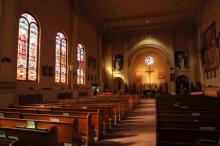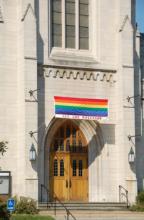mark chaves

“Religion plays a less important role in American life.” Or maybe, “Religion declines as powerful source of American public authority.”
I doubt those headlines would have garnered the attention the Pew Center recently received with its subtitle “Christians Decline Sharply as Share of Population.”
This is no criticism of Pew. It gets full credit for bringing religious demographics to the public’s attention. And the story of Christian decline is an obvious hook, as is the story of the rapidly growing number of “nones,” people with no particular religious affiliation.
But behind the story of Christian decline and the rise of “nones” is a long-standing debate about what religion theorists call “secularization,” the broad process by which religion gradually loses its social influence.

U.S. religious congregations are marching to their own drums now more than ever.
The National Congregations Study‘s latest look at the country’s churches, synagogues and mosques — the third wave of studies that began in 1998 — finds more congregations:
- Open their doors to gays and lesbians in active membership and in leadership.
- Show racial and ethnic diversity in the pews.
- Encourage hand-waving, amen-shouting, and dancing-in-the-aisles during worship.
- Disconnect from denominational ties doctrines and rules that might slow or block change.
The study, released Thursday (Sept. 11), draws on interviews with leaders at 1,331 nationally representative congregations and updates data from 1998 and 2006 studies. Non-Christian congregations were included in the study but there are too few for statistical analysis by topics.